[Photo at top: European Southern Observatory/Flickr]
Chile’s Atacama Desert is an inhospitable place. Shielded by the Andes Mountains to the east, the Coastal Range to the west, it is considered the driest desert in the world. It is so dry in fact, that its soil is almost completely deprived of organic material, making it an ideal Mars-like setting to test instruments for missions to the red planet as well as a setting for science fiction films.
Its climate, geographical position and altitude make the Atacama Desert one of the best regions in the world to observe the universe. Many astronomical observatories are located here, including three facilities of the European Southern Observatory (ESO), a joint organisation of by 15 European countries plus Brazil and the host country of Chile. Their observatories, namely La Silla, ALMA (an international corporation where ESO is one of three partners) and the Very Large Telescope (VLT), all offer free public visits on weekends. Of these, the VLT, located on Cerro Paranal, is probably the most famous, being the most advanced optical telescope in the world.
Reaching the secluded Cerro Paranal takes some effort. The closest airport is in Antofagasta, Chile’s second biggest city, 120 km north. From there, the only option is renting a car – we recommend doing so in advance as car rentals at the airport can quickly get booked out – and to stock up on water and food before leaving the city. The route is relatively easy, straight south to La Negra (where the last gasoline station is located) and then further south in the direction of Taltal.
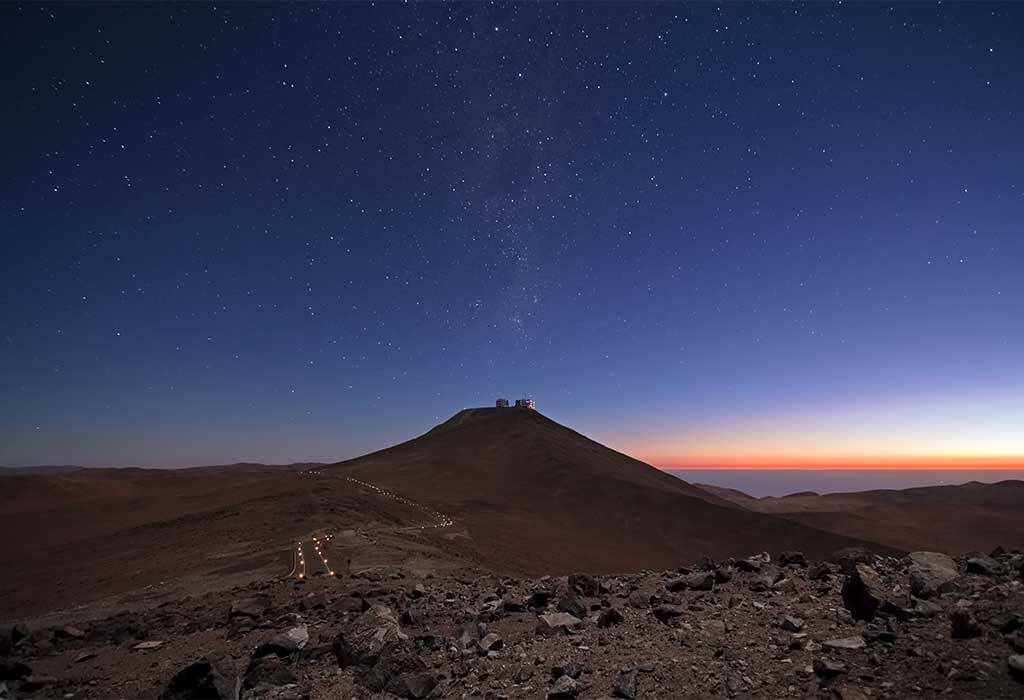
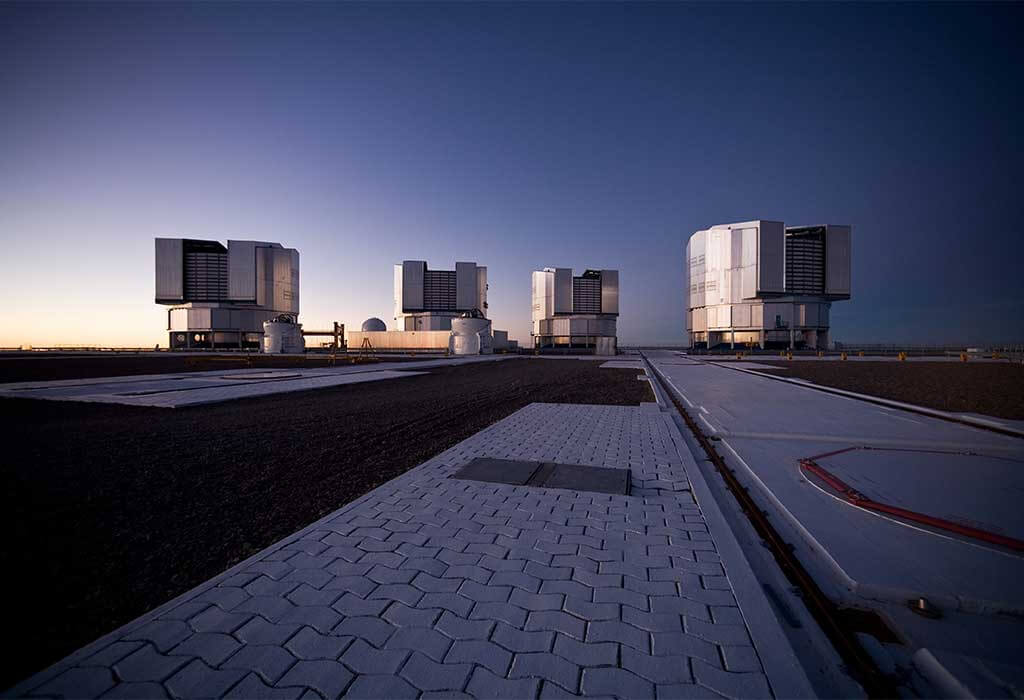
[Photo at left: ESO/J. Girard via Wikimedia Commons. Photo at right: ESO/H.H.Heyer via Wikimedia Commons]
Despite all these obstacles, visiting the VLT is a very rewarding experience, starting with the scenery encountered on the way. Immediately outside Antofagasta the landscape becomes surreal, even Mars-like. Kilometres and kilometres of red-yellowish sand and rocks offer the only contrast to the sky’s deep blue. Then Paranal’s facility, almost hidden, appears at the end of the serpentine-street leading to the top of the mountain, with the telescopes towering over La Residencia’s underground dome on the left and the base camp with its white, low buildings on the right.
After touching base at the Visitor Centre, it’s time to visit the telescopes. A quick drive up to the top of the mountain leads to an extra-terrestrial sight: the four Unit Telescopes, each encased in its individual dome, surround the area hosting the four Auxiliary Telescopes, mounted on tracks and thus movable to different positions depending on the needed observations.
Inside one of the four thermally controlled buildings is an 8.2-metre Unit Telescope. The 23-ton heavy parabolic glass-ceramic mirror encased in its structure gathers light from the universe and directs it to a 1.2-metre convex mirror located on its top and from there to a third, smaller flat mirror located in the centre of the large one, which in turn directs the beam to the instrument in use. Three instruments with different functions are installed on each Unit Telescope, one in the back and two at the sides. The whole telescope structure is mounted on a rotating platform standing in an oil bath to minimize vibrations, while the enclosures rotate synchronously with the telescopes.
The control room is where scientists and engineers direct all instruments and work on the data collected by the VLT. Astronomers from all over the world can apply to use the telescopes or book time for the ESO support astronomers to gather specific data. As a consequence, every activity hour of instrumentation is booked, all year long.
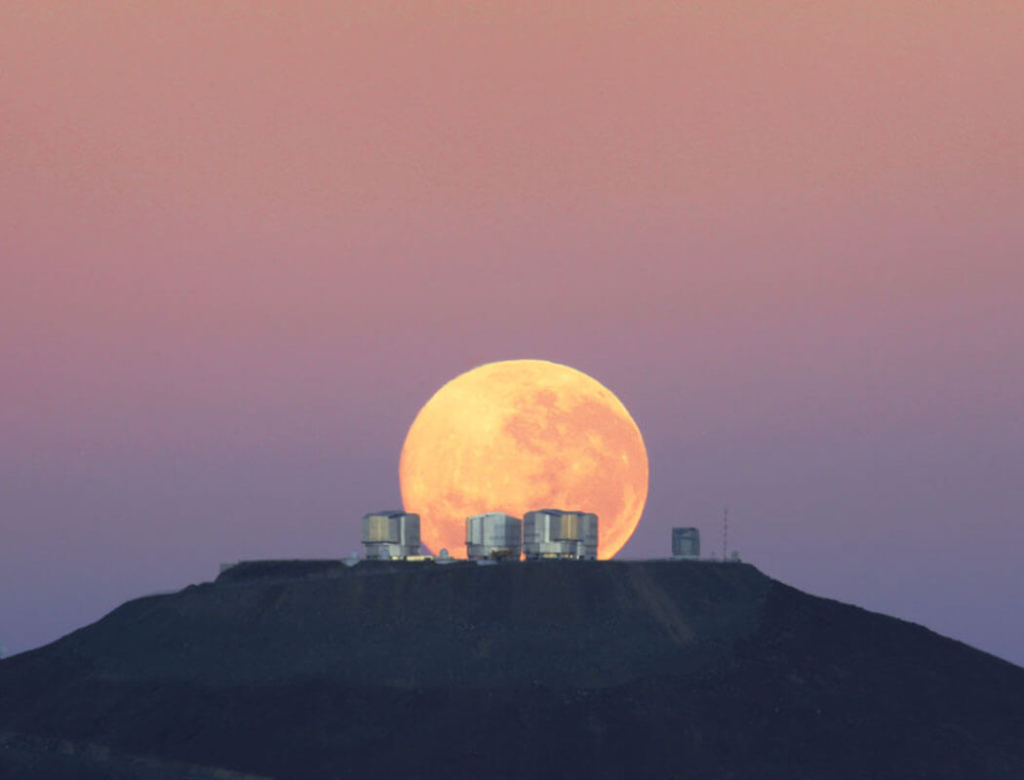
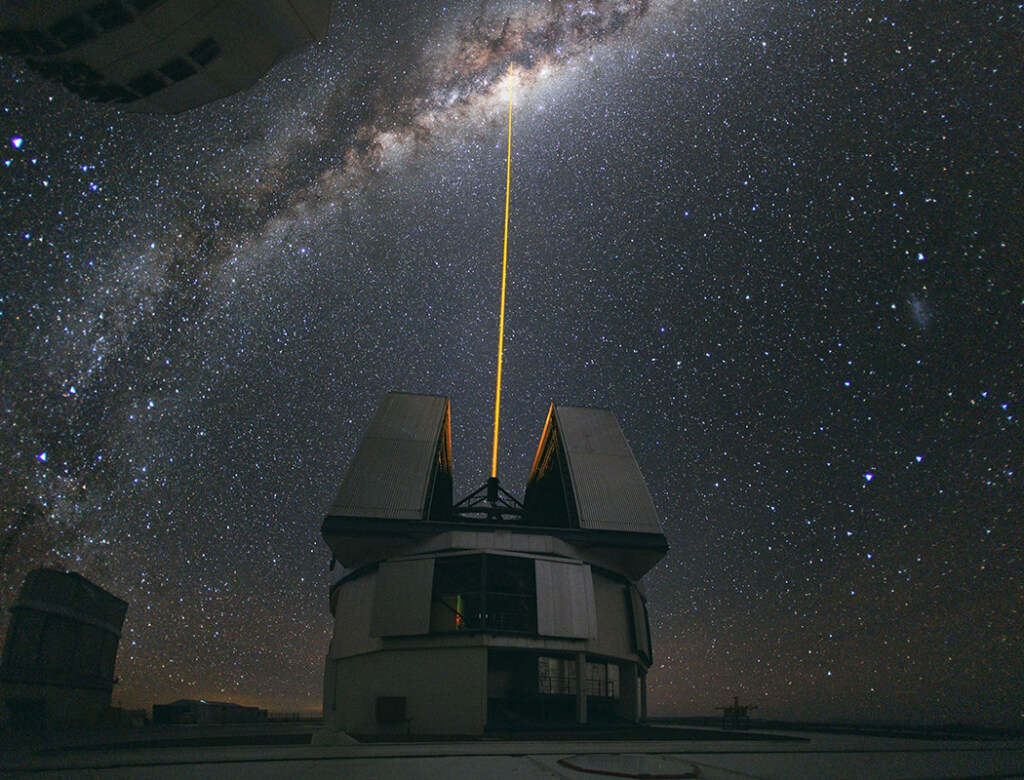
[Photo at left: G.Gillet/ESO via Wikimedia Commons. Photo at right: ESO/Yuri Beletsky via Wikimedia Commons]
Several ground-breaking astronomical discoveries took place in Paranal: the first image of an exoplanet, for instance, as well as observations confirming the existence of the massive black hole at the centre of the Milky Way. More recently, observations conducted at the three Chilean ESO observatories contributed to the discovery of Proxima b, an exoplanet with a temperature suitable for liquid water to exist on its surface orbiting Proxima Centauri (a red dwarf located 4 light years away from Earth).
At the end of the visit, the award-winning La Residencia hotel offers a sight for sore eyes. As much as the dry wind and the sun rage on the desiccated landscape outside, the inside of this partially underground complex, home to technicians, engineers and astronomers is soothing and humid. A swimming pool and two tropical gardens are the only devices ensuring a constant humidity rate of 35% in the building, compared to 10-15% outside. The green of the plants and the blue of the water contrast nicely with the reddish colour of the building, another sustainable choice in the desert landscape. It is such an otherworldly place that a James Bond movie, Quantum of Solace, was shot there.
But that’s not all! Just east of Cerro Paranal, perfectly visible from the VLT, is Cerro Armazones, the designed location of the E-ELT, or Extremely Large Telescope, due to start operations in 2024. Its 39-metre mirror will make it the largest optical telescope in the world, able to provide images 16 times sharper than those of the Hubble Space Telescope.
To avoid disturbing the astronomers’ work at night, all public visits take place during the day.
Professional photos of the night sky at Paranal can be downloaded for free from ESO’s official website, and since June 2016, you can even use sounds created from Orion’s nebula electromagnetic spectra to compose your own music. If you plan to visit northern Chile, make sure to book a visit at the VLT, La Silla or ALMA observatories for a glimpse into the present and the future of astronomy.
For more information, visit eso.org
Article by Livia Formisani

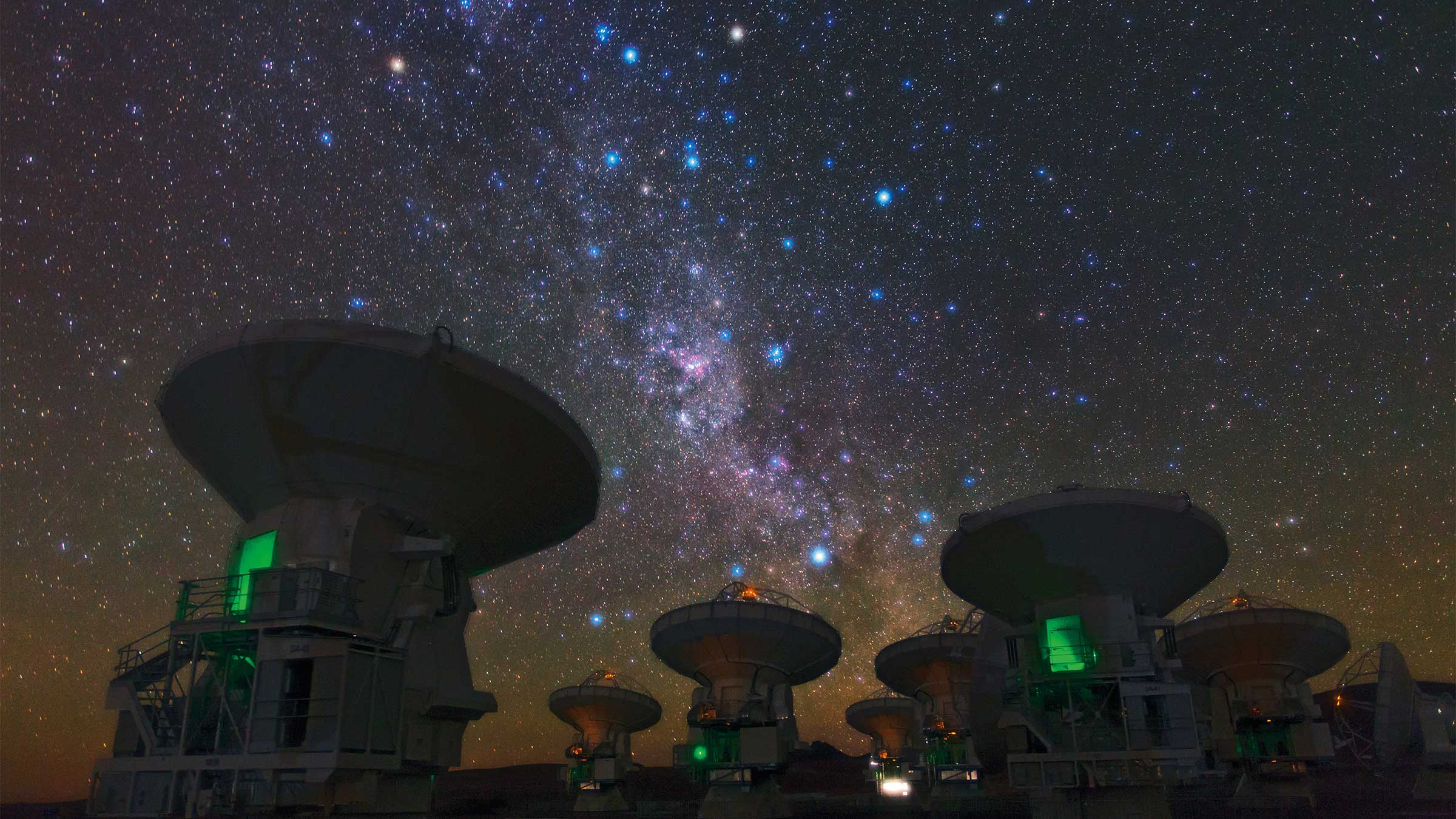












Sorry, the comment form is closed at this time.